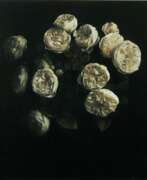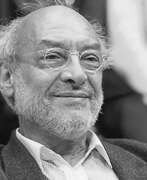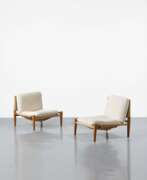Interior designers 21st century


Alexandra Bircken is a German artist, designer and installer who graduated from the Central Saint Martin's College of Art and Design.
The main theme in Alexandra Birkcen's work is the shell. She explores and combines a variety of materials - wool, concrete, wood, bone, everyday objects and clothing, and creates sculptural objects from them. The artist also uses objects that she encounters in everyday life: cars, motorcycles, surgical shirts, rocking horses, skis. However, she strips them of their familiar contexts and surprises us with unusual combinations.


Michel Boyer was one of the last great interior designers who remained true to the principles of modernity.
Boyer collaborated with Dior, Lanvin, Balmain and designed interiors for hotels, embassies and numerous corporate headquarters. His private clients have included Elie de Rothschild, Liliane Betancourt and Karim Aga Khan.


Benjamin Bronni is a German artist, sculptor, and architect.
He studied at the Stuttgart State Academy of Art and Design and works on a symbiosis of painting, sculpture and installations. Bronny has a strong interest in architecture, so he often develops site-specific works. In paper works, paintings and plastic wall objects, Benjamin Bronni explores the rhythmic fusion of form and space. The artist performs his work by hand, but also uses digital processes such as 3D rendering.


Ado Chale is a Belgian artist and designer best known for his exquisite mosaic inlays. Pieces of wood, minerals, or bone are sliced, arranged, and coated with resin to form the opulent surfaces. His furniture and domestic objects reference the natural world not only through the use of precious stones, metals, and organic materials, but also through the textures, patterns, and forms they express. Chale opened his first gallery in 1962. He exhibited jewelry and small side tables adorned with his unique inlay and sourced various gems and rocks via international travel. The self-taught craftsman then incorporated his acquisitions into larger pieces of furniture and sculptures attractive for their beauty and novelty in the 1970s. His work has been exhibited at the Ixelles Museum in Belgium, in France at the Museum of Fine Arts in Nancy and the Palais des Papes in Avignon, and in Japan at retail chain Seibu’s contemporary art museum.


Christo & Jeanne-Claude are an art duo, the married couple Christo Vladimirov Javacheff (1935-2020) and Jeanne-Claude Denat de Guillebon (1935-2009), an iconic pair of innovative land-art artists. They are known for their large-scale installations: they are packing great historical landmarks, working with huge spaces and monumental natural objects. Their projects are distinguished by what they call "Americanism" in Europe - that is, something grandiose and large-scale. Christo and Jeanne-Claude's work is in many major public collections.


Norbert Fleischmann is an Austrian artist whose passion for painting can be called encyclopedic, because it encompasses a variety of styles and genres, motifs, painting styles and media influences, even forms of presentation and representation.


Christoph M. Gais is a German abstractionist painter and designer. He studied painting at the Academy of Fine Arts in Stuttgart and at the Hochschule für Kunst in Berlin, where he received his master's degree. Christoph M. Geiss's paintings are based on the tradition of gestural abstract painting. His work also includes several art projects in architecture, such as the design of the Louise Schroeder Hall at the Red City Hall in Berlin.


Herbert Hamak is a German installation artist and sculptor who lives and works in Hammelburg, Germany.
Herbert Hamak's works are somewhere between painting and sculpture and are the result of a combination of form, color and light. Herbert Hamak works with pigment and mass; he shapes and transforms them into simple monochromatic forms - cubes, parallelograms and columns. Hamak often uses buildings, their facades, their spaces as a canvas or frame for a work of art.


Anton Henning is a German self-taught artist, designer, sculptor and installer.
He lives and works in Berlin, London and New York and has established himself as a talented and extraordinary furniture and interior designer. Henning is inspired by views of world capitals while developing his own avant-garde styles. He also wittily analyzes art history through his installations, sculptures and paintings.


Wolfgang Herzig was an Austrian painter and sculptor known for his critical portrayal of social realities. In his figurative paintings he draws attention to human weaknesses in everyday life.
There is a sense of social criticism in Herzig's work, but he never turns his characters into caricatures. Over time, the artist came to a peculiar two-dimensional form of plastics.


Herbert Hirche was a German architect, interior and furniture designer and educator.
Hirche studied at the famous Bauhaus school in Dessau and Berlin, where Ludwig Mies van der Rohe and Wassily Kandinsky taught. Trained as a carpenter, he first worked for Mies, Egon Eiermann and Hans Scharun before being appointed professor of applied art at the University of Applied Arts in Berlin-Weißensee in 1948. Four years later he became professor of interior and furniture design at the Stuttgart State Academy of Fine Arts. During his years of teaching, Hirche has educated generations of designers.
In addition to teaching, Hirche designed many homes and interiors. He designed furniture for Walter Knoll, Wilkhahn, Holzäpfel and Wilde+Spieth, as well as several projects for Braun, including the HM5-7 music cabinet and the HF1 television set. Hirche's simple and elegant models were exhibited at various Milan Triennales and the 1958 World Exhibition in Brussels. His work had a great influence on the development of product and interior design in Germany and the world.
Hirche was one of the founders of the Deutscher Werkbund (German Association of Craftsmen) in Berlin, was president of the Verband Deutscher Industrie-Designer (Society of Industrial Designers) for ten years, and was a member of the Rat für Formgebung (German Design Council).


Pierre Paulin was a French furniture designer and interior designer. His uncle Georges Paulin was a part-time automobile designer and invented the mechanical retractible hardtop, who was later executed by the Nazis in 1941 as a hero of the French Resistance. After failing his Baccalauréat, Pierre trained to become a ceramist in Vallaurius on the French Rivera and then as a stone-carver in Burgundy. Soon after, he injured his right arm in a fight, ending his dreams as a sculptor. He then went on to attend the Ecole Camondo in Paris. He had a stint with the Gascoin company in Le Havre where he gained an interest in Scandinavian and Japanese design. He was famed for his innovative work with Artifort in the 1960s and interior design in the 1970s.
At the time, his chair designs were considered very modern and unique and kick-started the successes of his designs among the younger population. Even today, his pieces are still being made and are sought after at auctions.


Gaetano Pesce is an Italian architect and a design pioneer of the 20th century. Pesce was born in La Spezia in 1939, and he grew up in Padua and Florence. During his 50-year career, Pesce has worked as an architect, urban planner, and industrial designer. His outlook is considered broad and humanistic, and his work is characterized by an inventive use of color and materials, asserting connections between the individual and society, through art, architecture, and design to reappraise mid-twentieth-century modern life.


Alejandro Ruiz is an Argentine artist, industrial designer, interior architect and educator.
Alejandro Ruiz graduated in industrial design at UNLP in La Plata, Argentina. He has taught classes at the Domus Academy, where he received his Master's degree, and at the Faculty of Architecture of the Technical University of Milan. At Studioruiz, a company he founded himself, he has worked with various internationally renowned brands.
Alejandro Ruiz has participated in many interior design and architecture events and exhibitions in Italy, France, Finland, Germany, Japan, the Netherlands, England and the USA. In 1994, together with Anna Lombardi, he created the Lessdesign brand, whose aim was to develop industrial projects. The designer has been involved in packaging, interior, store, event and exhibition design at Studioruiz.


Andreas Schmitten is a German painter and sculptor living and working between Düsseldorf and Neuss, Germany.
The artist situates his interdisciplinary and diverse work between drawing, sculpture and installation, using attention-grabbing techniques from religion, theater and commodities. He is interested in issues related to the human being and its history. Andreas Schmitten is known for his extensive and highly complex installations in which figures, objects and interiors are used to create fantastic, surreal visual worlds. Lacquered surfaces, pale colors, and mannered, elegant forms characterize his perfectly executed works, which often transform rooms into unreal and fairytale-like settings.
Schmitten's work can currently be seen in the Waldfrieden Sculpture Park in Wuppertal and the Villa Ludwig in Aachen. He has participated in numerous solo and group exhibitions.


Phillippe Starck is a French designer of interior and mass-produced consumer products.
Starck was educated at the École Nissim de Camondo in Paris, worked for Adidas before founding his first industrial design company, Starck Product, which he later renamed Ubik and went international. He worked with manufacturers in Italy including Driade, Alessi, Kartell, Dimmer in Austria, Vitra in Switzerland and Disform in Spain. He became known for a wide range of his designs, including interior design, architecture, home furnishings, furniture, boats and other vehicles.
Starck has designed residences, hotels, restaurants and other buildings in Tokyo, in Paris, in New York, in Mexico City and other world cities. He has designed the Xiaomi smartphone, the DIAL GPS tracking bracelet, and other technologies. In 2018, Stark collaborated with Axiom Space to design the interior of the International Space Station's habitation module, and a year later, he presented a chair design created with artificial intelligence.
Based on his principles of "democratic design," Starck focused specifically on creating designs for mass-market products rather than unique units. It is impossible to list all the products on which the tireless worker Phillippe Starck has worked and continues to work, the main goal of which is to improve the lives of as many people as possible, as far as possible.

































